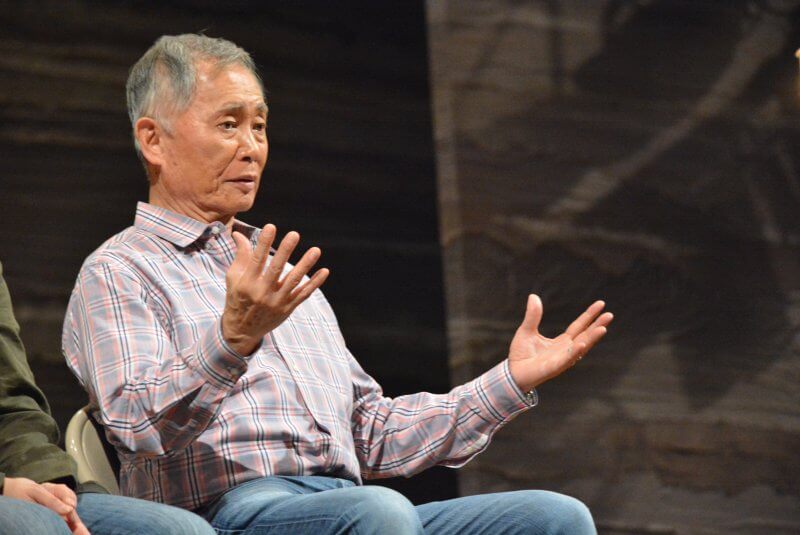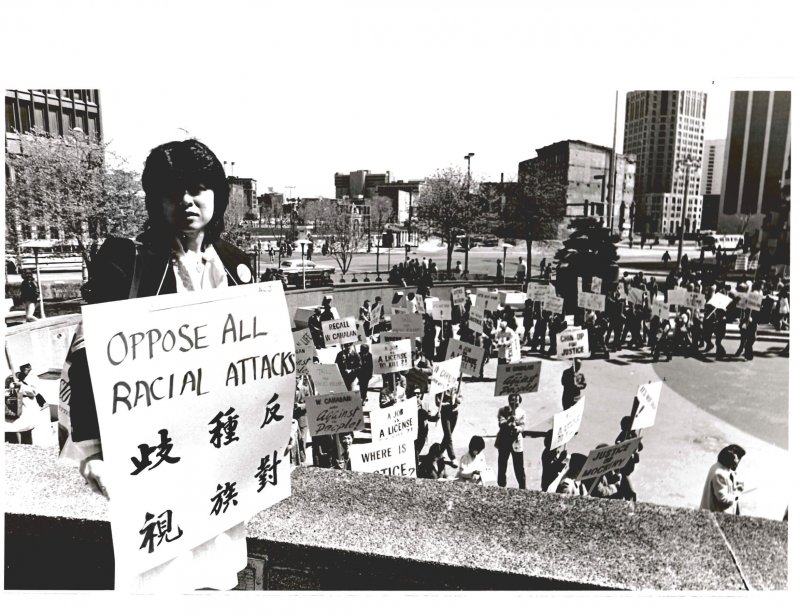Click to NikkeiView.com to visit the NEW Nikkei View blog!
THANKS!


George Takei speaking to the audience at a Talkback session following a performance of “Allegiance” in New York in November, 2015.
Like many people, and especially many Japanese Americans, I’m a big fan of George Takei. I’ve followed his career since I first saw him in the role of Lieutenant Hikaru Sulu in the original 1960s television “Star Trek” series and as he reprised the character in subsequent Star Trek movies in the 1970s and 1980s.
Instead of fading into pop culture history after the Star Trek movies, he’s reinvented himself in both politics and pop culture, and today he’s hands-down the best-known and influential Asian American and an activist for human rights. He’s truly the Energizer Bunny of AAPI role models.
The Japanese American National Museum in LA has honored Takei with an exhibit, “New Frontiers: The Many Worlds of George Takei” that closes August 20. Takei is a member of the museum’s Board of Trustees, and is a vocal supporter of the institution. JANM returns the favor with this overview of Takei’s epic career, from acting to activism, and his current status as a social media superstar. I wish I lived I LA so I could see the exhibition!
Continue reading

Vincent Chin rally in Detroit, 1983 (Photo by Victor Yang, China Times)
On the night of June 19, 1982, 27-year-old Vincent Chin was celebrating his bachelor’s party with friends in a Detroit strip club. He got into an altercation with two white men, and both groups were thrown out. The two men tracked down Chin with the help of a third man and brutally beat him with a baseball bat.
Their reason? They blamed the downturn of the Detroit auto industry on Japanese cars, which were at the time overtaking American models in popularity. They thought Chin was Japanese. He was Chinese American.
Vincent Chin was left in a coma and died four days later, on June 23 — a few days before his scheduled wedding. The two men from the club (one of them was the killer while the other held Chin) were charged with second-degree murder but the charge was reduced to manslaughter and neither served any jail time. They were ordered to three years probation and to pay $3,000 in fines.
A young Asian American journalist, Helen Zia reported on the murder, then led the efforts to bring federal civil rights charges against the men. In the end, the accused murderers settled a civil suit out of court. Ronald Ebens, the man who beat Chin, was ordered to pay $1.5 million, but Chin’s estate has never received any payment.
It was national news when it happened, but it’s faded from memory for most people.
Continue reading
One of the great benefits of today’s social media – and why I urge everyone, young and old, to at least be on Facebook – is that it can connect you to people you know, people you don’t know, and maybe most surprisingly, to people you used to know.
When baby boomers starting logging into Facebook about a decade ago, I was happy to reconnect with former co-workers and friends from the past, and to people from my school days, both college and high school.
I’m Facebook friends with a host of classmates and friends from two high schools. I attended 8th-10th grade in northern Virginia before my family moved to Colorado and I finished school in a Denver suburb.
But Facebook can have its downside (besides being a time-suck that can take over your life). Sometimes, old friends may have traveled in different directions from my own path.
Such is the case with John, who was my schoolmate in Virginia, and now lives in Washington, DC. We weren’t close friends, but knew each other. He was one of the popular kids and I was a nerdy school photographer. He and I became Facebook friends about a year and a half ago, right in time for the Donald Trump presidential campaign.
Anyone who follows me on social media knows I share a lot of stories about race, identity, racism, politics and pop culture, often Asian and Asian American pop culture. Oh, and food. Lots of food pictures.
I’m pretty liberal, though I wouldn’t say radical. John is conservative, and a Trump supporter, though I wouldn’t say alt-right. For months now, John has been commenting on my posts and chiding me for being left-wing, and citing a lot of Fox News and Breitbart rhetoric.
Continue reading

NOTE: I just heard today that Mas Nonaka, a member of the local Japanese American community who has cut hair at several iterations of his barbershop, Nonaka’s, in and around Sakura Square since before the block was called Sakura Square, passed away.
Nonaka’s was where I first got my hair cut when my family moved to Denver from northern Virginia in 1972, and his shop at the time was on 20th Street across from the Buddhist Temple. Mas and his wife Yasuko (who styled women’s hair in the shop) were familiar figures whenever my family and I went to Sakura Square.
In recent years, I would see Mas and Yasuko at many Japanese American community events. He was always upbeat and very warm, even though I could see the years had cloaked themselves around him. He always called me “Gilbert” because that’s how he knew me, from my dad. It was when I went to college, everyone started calling my Gil. I never minded him calling me by my full name.
He had moved his shop to the ground level of Sakura Square for some years, and I know he wanted to sell the business, but it seemed younger barbers weren’t interested in small, family-owned barbershops. They would rather work for a chain, or maybe save money to buy a chain’s franchise. The past couple of years, Mas had relocated his shop to the mezzanine level of Sakura Square but it was rarely open when I walked past it.
I’m sad on hearing about his passing because Mas was the subject of the second-ever “Nikkei View” column I wrote way back in 1998, when the Rocky Mountain Jiho newspaper, now long-gone, asked me to write weekly columns for them.
I’m “repurposing” that second column today in his honor. Rest in peace, Mas…
Continue reading